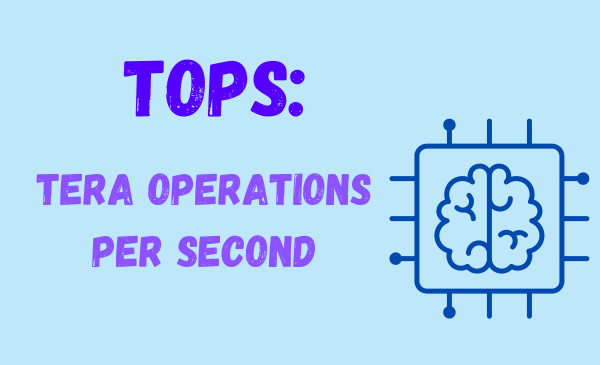New tech always brings new jargon, and with the AI boom, there’s a new term to know: TOPS. Though you don’t need to fully grasp TOPS to use AI tools on your devices, it’s a handy metric when shopping for new tech. Think of it like considering torque when buying a car, MB/s for storage, or GHz for a CPU. Though these comparisons aren’t exact due to rapid tech changes, they offer a useful guide.
What Does TOPS Mean?

TOPS stands for Tera Operations Per Second, or Trillion Operations Per Second—“tera” means trillion. These operations involve 8-bit integer (INT8) calculations, the kind of math used by on-chip neural processors for AI tasks. Since TOPS measures speed, you’ll see this spec with the latest neural processing units (NPUs) in laptops and phones. NPUs are less relevant for desktops since they’re designed for power-efficient devices. They’re slower than GPUs, which also handle integer math, but use much less power.
The Importance of TOPS
Manufacturers list TOPS as a peak theoretical throughput, often phrased as “up to” a certain number. This is similar to how GHz suggests CPU speed. A higher TOPS rating means a chip can handle AI tasks faster, improving performance and responsiveness for tools like image recognition, text generation, and other AI features.
Why TOPS Is Important Now

TOPS became a big deal when Microsoft and Qualcomm launched Microsoft’s Copilot Plus for Windows, setting a 40 NPU TOPS requirement. This excluded many older laptops. Copilot Plus PCs use specific Windows interfaces to speed up AI features and on-device models. The first systems with this capability use Qualcomm’s Snapdragon X Elite and X Plus chips, boasting a custom Hexagon NPU with up to 45 TOPS.
Since then, AMD and Intel have announced new CPUs with upgraded NPUs. AMD’s Ryzen AI 300 series (coming in July) and Intel’s Lunar Lake CPUs (coming in Q3) use a data type called block floating point. This combines 16-bit floating point with INT8, boosting NPU performance to meet Copilot Plus requirements. Apple’s M4 chip also uses this tech, enhancing its performance over the M3.
Beyond Copilot Plus
While NPU TOPS helps gauge how quickly you can run Copilot-driven features, it’s not the only performance indicator. Not all AI processes use integer math well, so INT8 TOPS might only reflect basic task speed. High-end generative AI, which creates detailed images and videos from text, often needs floating point operations.
Nvidia’s RTX 40-series GPUs can achieve hundreds of TOPS, surpassing NPUs. CPUs, though slower, also contribute to AI performance.
Marketing is shifting to “platform TOPS,” which measures the combined performance of all processors (CPU, NPU, GPU). This metric can vary based on whether the system is plugged in or on battery power. However, a high platform TOPS without an NPU means no support for Copilot Plus in Windows.
For advanced AI tools using floating point math (FP16 and FP32), the metric to watch is TFLOPS (Tera Floating Point Operations Per Second). CPUs with matrix extensions perform similar operations to Tensor cores, crucial for training AI models. As technology evolves, the way we measure a PC’s AI performance will also change.
Why TOPS Matters
NPUs are meant to run AI models locally on your device, cutting out the need for cloud processing. This saves costs and keeps your data private, as nothing needs to be uploaded. In summary, understanding TOPS can help you make better choices when buying a laptop, especially if AI capabilities are important to you.

Subtly charming pop culture geek. Amateur analyst. Freelance tv buff. Coffee lover
